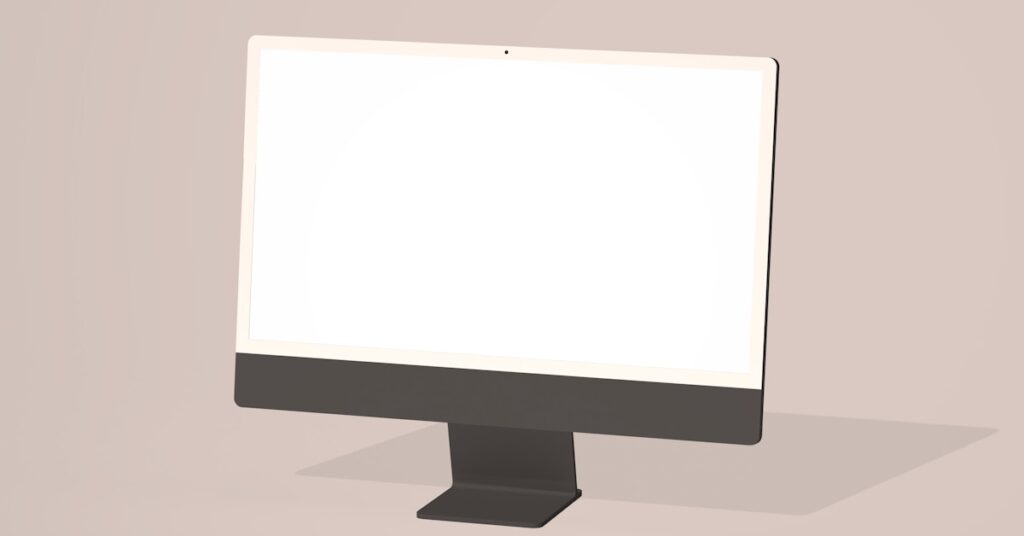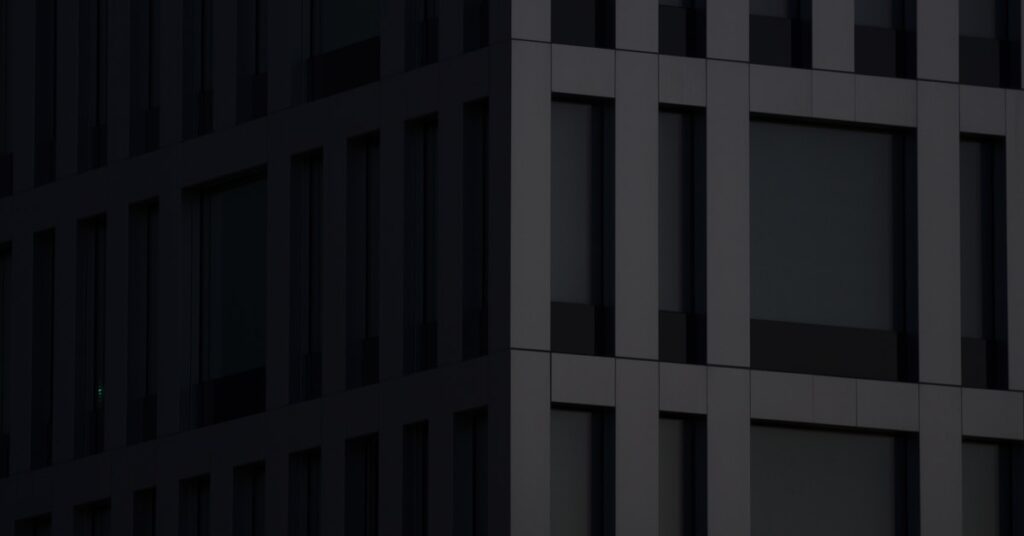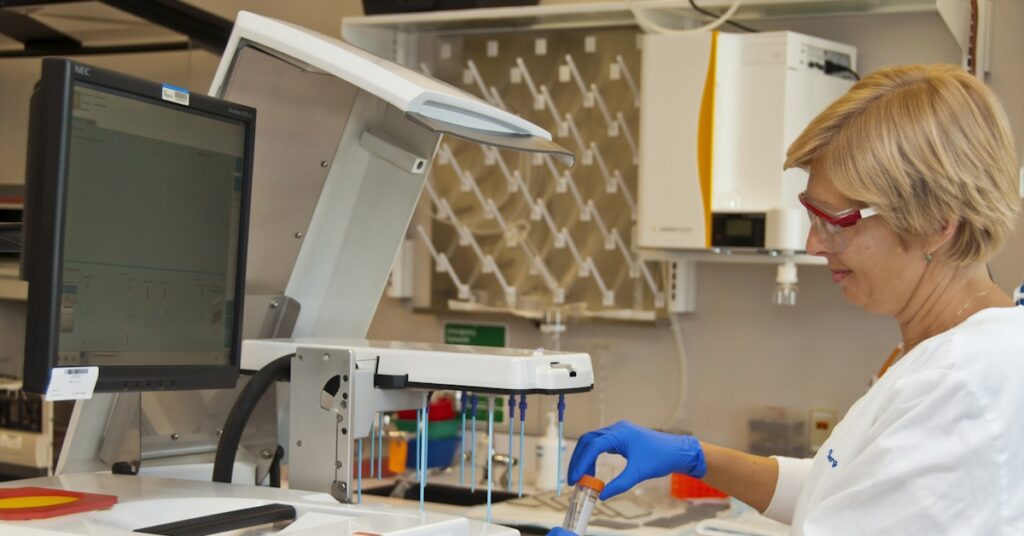Stuck choosing the right 3D software?
The endless options and conflicting reviews create decision paralysis, making it hard to find a tool that fits your existing workflow.
This indecision often leads to workflow disruptions across your team and inconsistent assets, making it difficult to justify the investment.
Many creative directors I speak with are trying to balance advanced features against tight budgets. They fear getting locked into a system that can’t scale with them.
Speaking of efficient resource allocation, my guide on hospital asset management software explores how to cut costs and track equipment in healthcare settings.
The right software helps you unify your creative assets and choose a tool that fits your team’s needs without the usual guesswork.
In this guide, I’ll show you my picks for the best 3D painting software. I’ll focus specifically on how they solve key integration and workflow challenges.
You’ll discover solutions that streamline texture creation, boost collaboration, and future-proof your creative pipeline without breaking your budget.
Let’s dive in.
Quick Summary:
| # | Software | Rating | Best For |
|---|---|---|---|
| 1 | Adobe → | SMEs creative directors | |
| 2 | Maxon → | Design studios creative leads | |
| 3 | Foundry → | SMEs and mid-size studios | |
| 4 | Blender → | Open-source enthusiasts | |
| 5 | 3DCoat → | Creative directors, budget-conscious |
1. Adobe
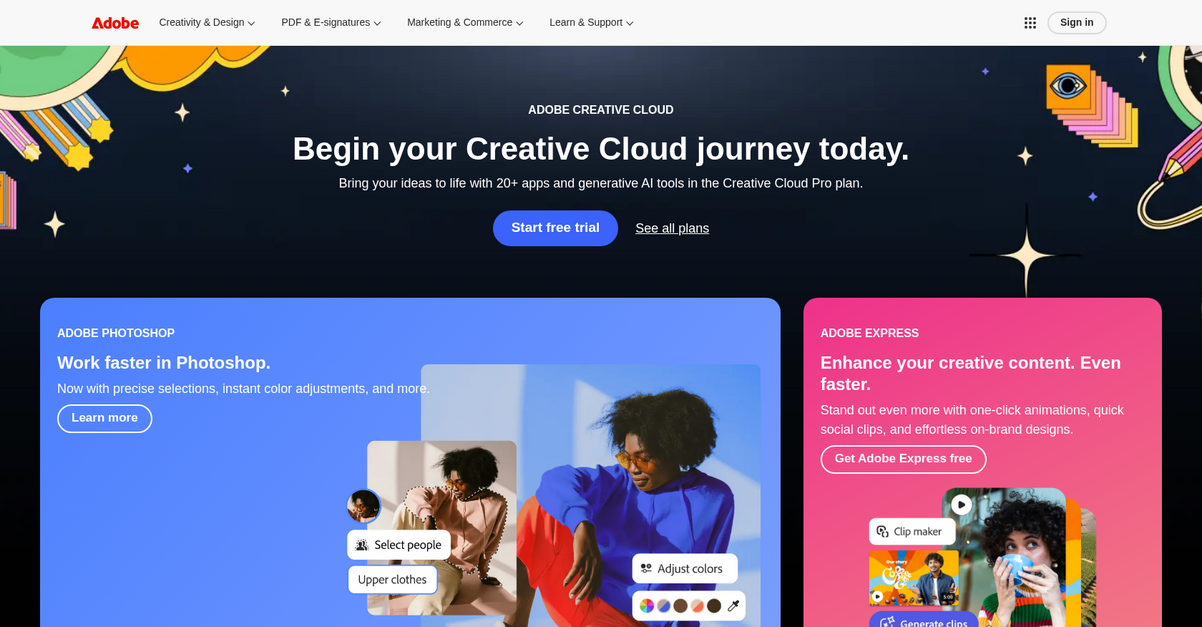
Struggling with complex 3D painting software choices?
Adobe offers over 20 applications within Creative Cloud, including generative AI tools, to streamline your creative process.
This suite enables you to bring your ideas to life, tackling the challenge of overwhelming tool evaluations head-on, offering a unified solution for your asset creation.
This simplifies your decisions.
Adobe Creative Cloud lets you begin your journey with a comprehensive suite of tools, addressing the need for integrated solutions in your workflow. Your team can work faster in Photoshop with features like precise selections and instant color adjustments, which are crucial for detailed 3D texturing. This improves asset consistency across your design teams. Additionally, Adobe Express helps enhance creative content faster with one-click animations and quick social clips, supporting various project needs and speeding up your content output.
Achieve creative excellence and future-proof your pipelines.
Key features:
- 20+ apps and generative AI tools: Access a vast ecosystem of creative applications and cutting-edge AI capabilities to bring your complex 3D ideas to life.
- Faster Photoshop workflows: Utilize precise selections and instant color adjustments to enhance your 3D textures with speed and accuracy, reducing iteration time.
- Enhanced creative content with Adobe Express: Quickly create on-brand designs, social clips, and animations, streamlining your content production and consistency.
Adobe features, pricing, & alternatives →
Verdict: Adobe Creative Cloud stands out as a strong contender for the best 3D painting software, especially for creative directors in SMEs. Its integrated suite of applications, including Photoshop’s advanced tools and generative AI, directly addresses the need for streamlined workflows and consistent asset creation, helping you balance cost-effectiveness with powerful features.
2. Maxon

Tired of overwhelming 3D software evaluations?
Maxon offers tools like ZBrush and Forger, addressing the struggle to balance cost-effectiveness with advanced features. This means your creative team can simplify choices, avoiding decision paralysis.
With Maxon One, you get a bundle of products, helping you bypass the need for a complex tool evaluation framework. This directly helps creative directors justify ROI and ensure consistent asset quality across your teams.
Here’s how to unify your assets effortlessly.
Maxon One provides a comprehensive suite of tools, eliminating compatibility concerns. This means you can create without worrying about Windows versus Mac issues or mobile versus desktop usability.
For instance, ZBrush is the industry standard for digital sculpting and painting, while Forger is a mobile sculpting and modeling app. This flexibility helps streamline your texture creation workflows and supports real-time collaboration.
Additionally, Maxon offers Redshift, a GPU-accelerated renderer, and Cinema 4D for 3D animation and simulation. This integrated approach reduces iteration time, enhances rendering quality, and scales with your projects, avoiding vendor lock-in.
The result: Future-proof your creative pipeline.
Beyond design, exploring best conversational AI platforms can significantly boost your overall business efficiency.
Key features:
- Maxon One bundle combines Cinema 4D, ZBrush, Redshift, and Red Giant tools, providing a cost-effective solution for comprehensive 3D content creation and unified asset management.
- ZBrush and Forger offer industry-standard digital sculpting and painting capabilities across desktop and mobile, ensuring asset consistency and allowing creativity on the go for your team.
- Cinema 4D and Redshift provide powerful 3D animation, simulation, and GPU-accelerated rendering, enabling faster iterations and high-quality visual output for your projects.
Maxon features, pricing, & alternatives →
Verdict: Maxon, with its Maxon One bundle, offers a compelling suite of tools that make it a strong contender for the best 3d painting software. Its unified approach to 3D creation, encompassing sculpting, painting, and rendering, directly addresses your need for streamlined workflows and consistent asset quality, making it ideal for creative directors in design studios.
3. Foundry

Struggling with complex 3D painting software choices?
Foundry’s Mari offers a complete artist’s palette, simplifying your texture creation.
This means you can paint high-resolution digital 3D textures, empowering you to create new worlds without limits.
Here’s how you streamline your workflow.
Foundry’s Mari excels in high-resolution digital 3D painting and texturing, a crucial capability for detailed assets. You can achieve enhanced rendering quality and improved asset consistency across your teams.
Mari 7.1 introduces 2D painting and new Smart Masks, significantly reducing iteration time for your projects. This practical application supports scalable solutions, preventing vendor lock-in.
Additionally, Foundry’s ecosystem, including Katana for Look Development and Nuke for compositing, demonstrates a unified pipeline. This allows you to manage data-heavy projects and create complex visual stories, ensuring all your assets are consistent and collaborative efforts are seamless, which is essential for creative pipelines.
You’ll gain complete control over your creative pipeline.
Before diving deeper, for those involved in academia, my analysis of higher education software explores campus transformation.
Key features:
- High-resolution digital 3D painting: Create detailed textures for complex assets, crucial for industries like automotive and aerospace, enhancing rendering quality.
- Comprehensive artist’s palette: Utilize Mari’s complete toolset for texture creation, including 2D painting and Smart Masks, streamlining your team’s workflow.
- Integrated pipeline with Katana and Nuke: Unify look development, lighting, and compositing processes, ensuring asset consistency and supporting scalable project growth.
Foundry features, pricing, & alternatives →
Verdict: Mari, with its advanced texturing capabilities and integration within Foundry’s suite, stands out as an excellent option for the best 3D painting software. Its focus on high-resolution digital 3D painting and efficient workflows addresses common pain points for creative directors in SMEs and mid-sized studios.
4. Blender
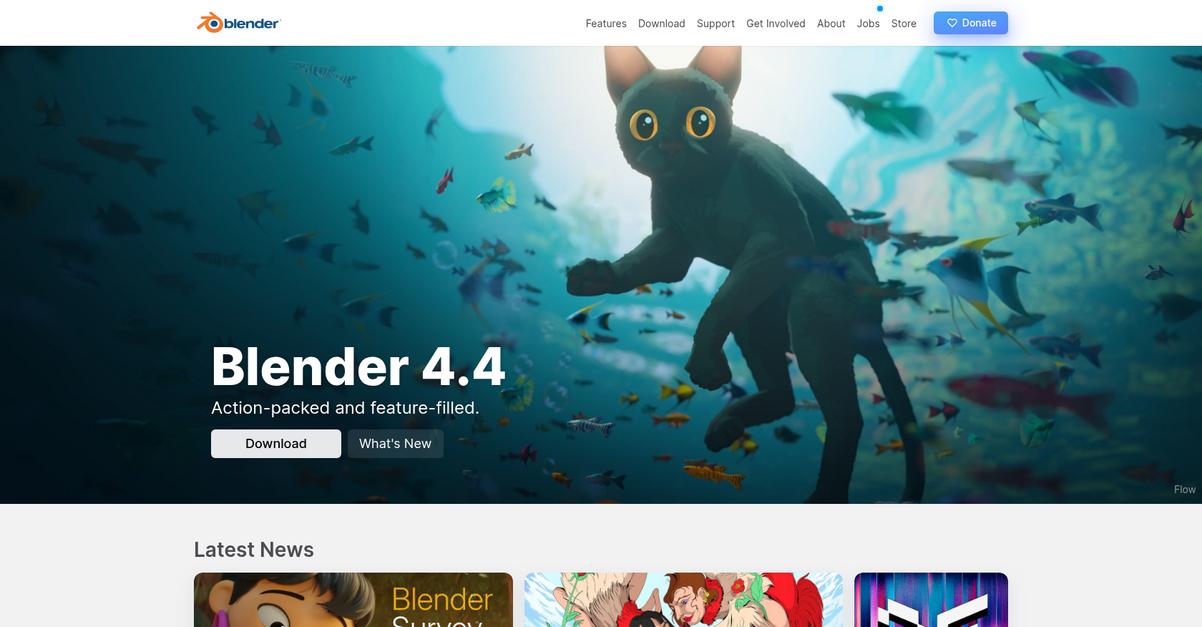
Struggling with complex 3D painting software choices?
Blender offers production-ready tools for modeling and VFX, directly addressing your need for comprehensive features.
This comprehensive suite includes advanced sculpting tools and brushes, making it easier to create intricate models for various industries.
It’s time to streamline your asset creation.
Blender solves the problem of overwhelming tool evaluations by unifying essential capabilities. You can leverage its powerful unbiased path-tracer engine, Cycles, for stunning ultra-realistic rendering, which supports PBR shaders and HDR lighting. Additionally, its 3D painting with textured brushes and masking allows you to combine 2D with 3D right in the viewport, streamlining your workflow. Plus, with robust modeling tools like full N-Gon support and advanced sculpting, Blender empowers you to create, transform, and edit models with ease, reducing iteration time and improving asset consistency.
This means you get everything needed to unify your assets.
Before diving deeper, you might find my analysis of best account planning tools helpful for optimizing your business strategies.
Key features:
- Comprehensive Modeling Tools: Easily create, transform, and edit models using full N-Gon support, advanced sculpting, and 3D painting with textured brushes and masking, ensuring asset consistency.
- Powerful Cycles Render Engine: Achieve stunning ultra-realistic renders with real-time viewport preview, CPU & GPU rendering, PBR shaders, and HDR lighting, enhancing visual quality.
- Flexible Python API: Customize the interface, create your own tools and add-ons, and integrate with existing pipelines through Python scripting, providing scalable solutions without vendor lock-in.
Blender features, pricing, & alternatives →
Verdict: Blender is a top contender for the best 3D painting software, offering an “action-packed and feature-filled” open-source solution that integrates modeling, rendering, and 3D painting capabilities. This eliminates the need for multiple tools, enhancing workflow efficiency and helping you control software costs while achieving high-quality visual outcomes, as seen in projects from Blender Studio.
5. 3DCoat

Struggling to unify your 3D assets and ease tool choices?
You can transform your 3D ideas into production-ready models using 3DCoat. This means it helps you overcome the pain points of fragmented workflows and tool evaluations.
3DCoat has all the tools you need, taking your concept from digital clay to a fully textured organic or hard surface model. This means you can create diverse models without switching software, addressing your need for streamlined texture creation.
Here’s how 3DCoat can simplify your creative process.
3DCoat tackles evaluation paralysis by offering a comprehensive suite, reducing the need for multiple specialized tools. This is especially useful if you are managing budget constraints while needing advanced features.
The software offers Microvertex, Per-pixel, or Ptex painting approaches for versatile texturing, along with Realtime Physically Based Rendering (PBR) viewport with HDRL, making your models look realistic and impressive. Additionally, 3DCoatTextura, a tailored version, provides professional 3D texturing and rendering tools at an affordable price, easing your ROI justification. Plus, you get access to a free library of over 500 PBR scanned materials and 1200 PBR samples for realistic assets.
The result? Enhanced rendering quality and consistent assets across your teams.
Before diving deeper, you might find my analysis of best speech to text software helpful for boosting your overall productivity.
Key features:
- Comprehensive Workflow Integration: Takes your 3D idea from digital clay to a fully textured organic or hard surface model, reducing the need for multiple disparate tools and streamlining your entire creative pipeline.
- Advanced Texturing Capabilities: Offers Microvertex, Per-pixel, and Ptex painting approaches with Smart Materials and Realtime PBR viewport, ensuring high-quality, consistent textures for your 3D models.
- Extensive Material Library Access: Provides free access to over 500 PBR scanned materials and 1200 PBR samples, enabling you to create realistic and impressive assets with ease, enhancing your final rendering quality.
3DCoat features, pricing, & alternatives →
Verdict: If you’re a creative director looking for the best 3D painting software that unifies your assets, 3DCoat offers a complete solution from sculpting to texturing. Its comprehensive toolset, including voxel and polygon capabilities, PBR texturing, and extensive material library, helps streamline your workflows, improve asset consistency, and achieve impressive rendering quality, making it a powerful choice for your creative pipeline.
6. ArmorPaint

Is tool evaluation paralyzing your 3D painting workflow?
ArmorPaint simplifies this with its stand-alone design, allowing you to drag and drop models and start painting immediately. This means you get instant visual feedback as you work.
The software helps you avoid decision paralysis by offering a focused, physically-based texture painting experience. You’ll find its node-based system streamlines procedural material creation.
Here’s how to simplify your asset creation.
ArmorPaint empowers you to texture your 3D models efficiently. Its GPU-accelerated engine ensures a smooth 4K painting experience, even on medium-power hardware.
This focus on performance means you can paint with fully procedural materials and build fill layers using intuitive material nodes. You can also create patterns and procedural brushes with brush nodes.
Additionally, ArmorPaint features ray-traced baking, painting effects, and viewport rendering running on Direct3D12, Vulkan, and Metal, powered by an in-house rendering engine. Plus, live-link plugins for Blender, Unreal Engine, and Unity integrate it into your existing pipeline, and it runs on Windows, Linux, macOS, iOS, and Android.
The result: Enhanced rendering quality.
Before diving deeper, you might find my analysis of workforce planning software helpful.
Key features:
- GPU Accelerated Performance: Designed from scratch to run completely on your GPU, enabling smooth 4K painting and seamless 16K texture work on high-end graphics cards.
- Node-Based Procedural Workflows: Work quickly with nodes to paint using fully procedural materials, build fill layers, and create patterns and brushes, enhancing creative flexibility.
- Broad Platform Compatibility & Integration: Runs everywhere (Windows, Linux, macOS, iOS, Android) and offers live-link plugins for Blender, Unreal Engine, and Unity to unify your asset pipeline.
ArmorPaint features, pricing, & alternatives →
Verdict: ArmorPaint stands out as the best 3D painting software for those seeking efficiency and seamless integration. Its GPU acceleration and node-based system allow creative directors to streamline texture creation and improve asset consistency, while broad platform compatibility and live-link plugins ensure it fits into your existing workflows without disrupting projects.
7. Quixel

Struggling with complex 3D painting tool choices?
Quixel addresses this by centralizing your essential resources with Megascans and Bridge. This means you can streamline your workflow and avoid fragmented asset libraries.
You can overcome the pain points of evaluating multiple tools, ensuring your team focuses on creativity, not compatibility issues. Here’s how it works.
Unify your 3D assets and ease tool choices.
Quixel simplifies your creative pipeline by providing access to a vast library of high-quality assets through Megascans. This introduces a unified source for all your material and texture needs.
You can then utilize Bridge to efficiently organize and export these assets directly into your preferred 3D painting software, saving significant time and effort in asset management. Additionally, Fab integrates smoothly, allowing you to access and publish your creations effortlessly, enhancing collaboration and distribution.
The result is a more efficient and consistent creative process.
Speaking of improving efficiency, my guide on best wait list software can help elevate your customer experience.
Key features:
- Megascans library: Offers a comprehensive collection of pre-made 3D assets and materials, reducing the need for costly custom content creation and accelerating project timelines for your team.
- Bridge integration: Provides powerful tools to browse, manage, and export assets, ensuring compatibility and smooth transitions into various 3D painting and design applications without compatibility headaches.
- Fab platform access: Facilitates easy publishing and sharing of your 3D creations, enhancing collaboration within your team and expanding your reach to a broader audience for feedback.
Quixel features, pricing, & alternatives →
Verdict: Quixel emerges as a strong contender for the best 3D painting software, especially for creative directors in SMEs seeking to unify assets and simplify tool decisions. Its Megascans library and Bridge integration directly address the need for streamlined texture creation and consistent assets, significantly reducing iteration time.
Conclusion
Still overwhelmed by 3D software choices?
I get it. The decision paralysis from endless tool comparisons stalls creative projects and makes it hard to find a solution that truly fits your workflow.
This indecision leads to real consequences for your design studio. Workflow disruptions and inconsistent assets can derail entire projects, making it incredibly difficult to justify new tool investments.
Here’s what I’d recommend instead.
After reviewing these options, Adobe Creative Cloud is the clear winner. Its integrated suite eliminates tool-choice paralysis, offering a powerful, unified ecosystem for your creative team.
What impresses me most is how tools like Photoshop and its generative AI improve asset consistency. Choosing the best 3d painting software like this future-proofs your entire pipeline.
I strongly recommend you start a free trial of Adobe to see how its unified ecosystem can transform your work.
You will unify your entire creative process.

